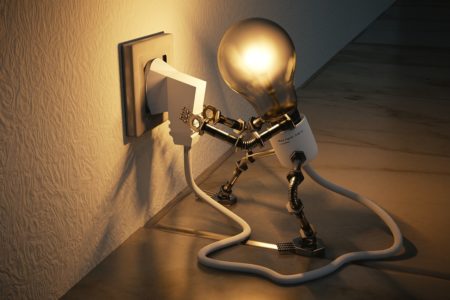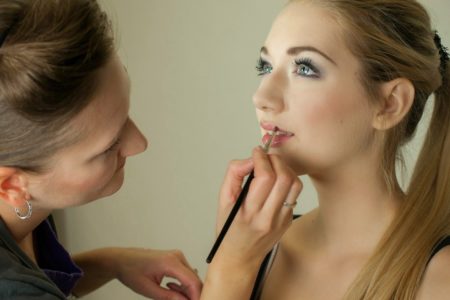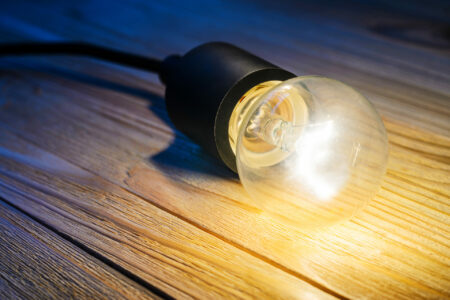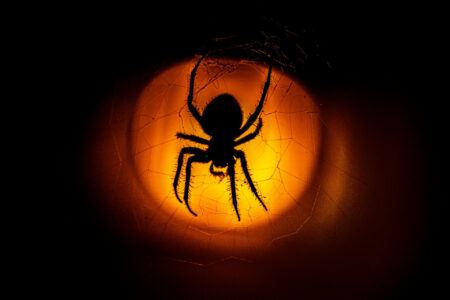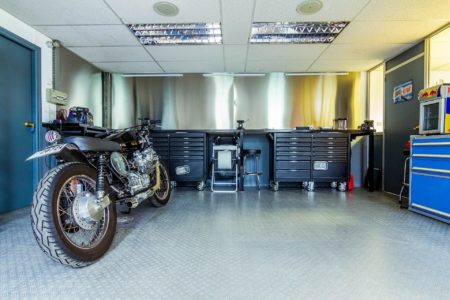Outdoor lighting is superbly well-suited to use inside your home. Unlike indoor lights, outdoor lights are robust and weatherproof, which makes them perfectly safe to use indoors. But you need to consider the following points: correct voltage, lighting type, light bulb option and UL rating. Read on to find out the details.
Is It A Good Idea To Use Outdoor Lights Inside?
Outdoor lights are offered in various design options, including different materials. You might have found the ideal light for a remodeling project, but it is an outdoor light. Or you may want to move your favorite garden string lights inside for the winter to keep the festive cheer going.
Outdoor lighting differs physically from indoor lighting since outdoor lighting must endure harsh weather conditions; as such outdoor lights are robustly manufactured and, importantly, weatherproof.
Keeping moisture and dirt out of the electrical components of the light, including the bulb, is the difference between indoor and outdoor lights. The materials from which outdoor lights are made are explicitly chosen to last a long time outdoors without corroding, degrading, or fading due to exposure to the sun.
Indoor lights are not protected from weather influences, including the cold, so they are generally not made to be weatherproof as they don’t need to be.
As outside lights are physically built to a higher spec than indoor lights in terms of weatherproofing, nothing is stopping you from using outdoor lights indoors if they suit your specific need.
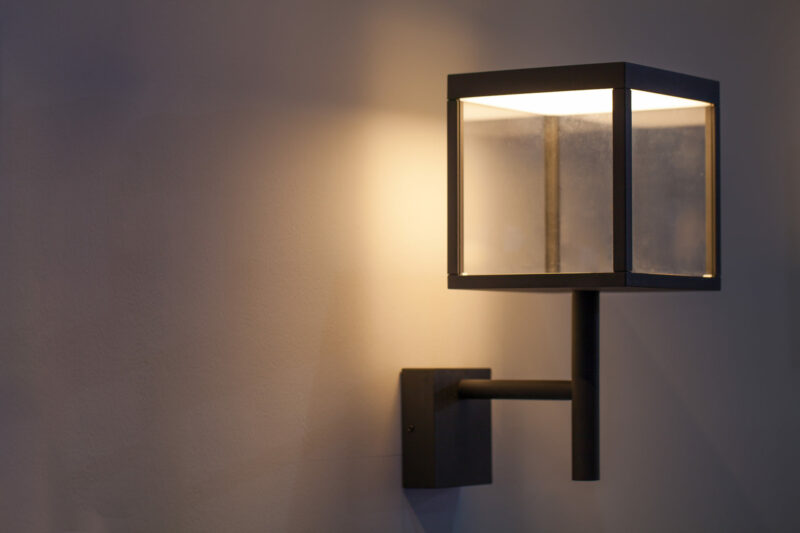
Correct Voltage
Many outdoor lights operate at 12 volts, so ensure the voltage before connecting the outdoor light to your home’s supply. Houses generally run on a 120-volt electrical supply, so joining a 12-volt light to this circuit would result in the outdoor light being irreparably damaged.
Low-voltage 12 or 24-volt lights are often used in landscaping applications. These lights use a low-voltage transformer to reduce the voltage from 120 to 12 or 24 volts. So when using an appropriate transformer, these lights would also work perfectly inside.
Outdoor Lighting Types
Outdoor lights are available in many options, ranging from the smallest fairy light placed discretely under a plant to a massive flood light that illuminates a large area.
Outdoor lights are generally wall-mounted, pole-mounted, pathway lights, step-mounted or suspended between anchor points in the case, or string lights. The bulbs are either enclosed in the light housing or sconce or have an exposed bulb design.
Free-standing solar-powered lights have been growing in popularity for outside lighting. An ever-increasing variety of options are available as the demand for energy-saving lighting solutions increases.
The only hiccup, however, is that solar lights need to be exposed to the sun to charge, making them impractical for inside use.
Deciding which type of outdoor light you’d use inside is pretty much decided by its intended purpose. Wall-mounted and string-type lights can be used inside, while pole-mounted lights are best left outside unless you have a custom mounting feature.
Spotlights and floodlights deliver very bright light as they’re made to light up larger areas. As such, they may be impractical for inside use other than where larger areas need to be illuminated.
Lightbulb Options
Just as important as the light fitting is the bulb, generating the light. Manufacturers recommend specific light options to ensure the light works optimally. We are truly spoilt for choice when it comes to lighting solutions today.
Bulbs suited to indoor and outdoor use are available in a large selection, with many explicitly made for a particular type of light fitting. Below is a list of the most used light bulbs today.
Incandescent
These are the traditional light bulbs that we know so well. Incandescent bulbs use a heated wire filament that gives off light when electricity passes through the filament.
The bulb contains an inert gas that protects the wire filament from corrosion and melting during use. Incandescent bulbs are well suited to indoor use, provided the light can be safely accommodated within the home.
Incandescent light bulbs become very hot during use and therefore need to be housed in a stable light fitting clear of curtains and combustible materials such as nylon curtains. Safety is especially relevant to string lights that are popular indoor decorations and often use incandescent bulbs.
Incandescent bulbs consume much more electricity than LED bulbs which has significantly reduced their popularity in a world striving to save on energy costs.
Halogen Spotlight And Flood Light
Halogen spotlights and flood lights utilize a compact, incandescent bulb filled with halogen gas. This combination gives off a very bright light making the lights well-suited for lighting large areas.
Halogen bulbs are also available in compact downlight bulbs and, interestingly, are widely used in motor vehicle headlights. One advantage of halogen lights is that they are well-suited to dimming applications.
Halogen outdoor lights are generally very bright, given that they are used to light larger areas. Using garden halogen lights within the home would have limited uses, such as illuminating a feature within the home.
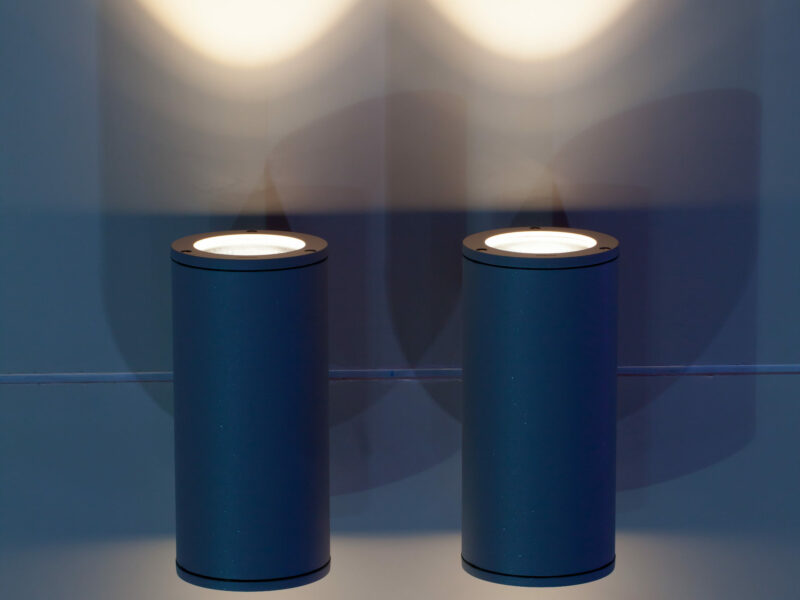
LED
There’s no denying that LED technology has dominated the domestic lighting market. Compared to the other light bulb types, the light-emitting diode lights are the new kid on the block. LEDs give off bright light and are available in many colors, catering to almost all applications.
These lights are extremely compact, are weather resistant, and consume less power than all other bulbs. Their compact size makes them perfect for use in string lights and, when combined, make excellent spotlights and floodlights.
LED lights are well-suited indoors, provided the light’s design suits the room. LED spotlight or flood lights are useable as a temporary light source but will most likely be too bright to use as a permanent fixture within the home environment.
Compact Fluorescent
Compact fluorescent bulbs had all but taken over the domestic lighting market before the advent of LED bulbs. Today they still have their place but are not well suited for use in cold climates.
When buying compact fluorescent bulbs, make sure of the temperature rating, as fluorescents don’t work well below thirty-five degrees Fahrenheit (0°C). Compact fluorescent bulbs are well suited for use indoors where they aren’t exposed to very low temperatures.
Metal Halide
Metal halide bulbs are specialty bulbs mainly used to provide light in large open spaces such as parking lots, factories, and public areas where bright lights of high wattage ratings up to 2000 watts are needed.
Domestic bulbs are available in specific applications, such as illuminating a tall stairwell or providing light from a soaring ceiling.
Xenon
Xenon bulbs are widely used in low-voltage landscaping and path lighting applications due to the bright light that the compact bulbs emit. Inside use of the lights may be limited, but should you have an indoor garden needing light to accentuate specific features, this may be the light for you.
UL Rating
A little-known fact is that light bulbs sold in the United States should be marked with a UL (Underwriters Laboratories) stamp. The Mark certifies that the product, in this instance, light bulbs, was tested and complied with the relevant safety standards.
In addition to the testing, the bulbs are rated for their specific moisture compatibility. The rating is found on the product or the packaging, given the limited space on some bulbs.
The bulbs would be marked for use in the following locations.
- Dry
- Damp
- Wet
Using a bulb meant for dry applications in an area such as a bathroom may shorten the bulb’s lifespan should moisture penetrate the bulb. Outdoor bulbs would be rated for wet locations, given the harsh conditions they’d operate.

